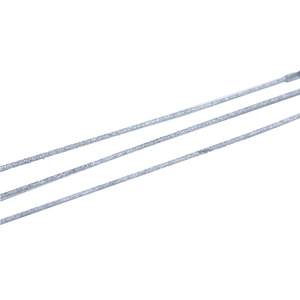What Is TCT Circular Saw Blade
الجسم
The general material for circular saw blades is mainly used for cutting low-hardness carbon steel and non-ferrous metal rods and pipes. The pipe cutting circular saw blade of superhard material is used for milling of difficult-to-cut materials (heat-resistant iron, high-hardness steel such as stainless steel).
Due to the advantages in quality control, metallurgical forming and saw blade design in the production process, MORSE "Metal Devil" can cut hard metals quickly and stably.
The number of teeth of the circular saw blade is different, and its base is hardened steel.
The circular saw blade head is especially made of tungsten carbide and titanium carbide.
The scientific arrangement of circular saw blade heads makes the life of the saw blade longer and the cutting process more stable. Saw blade with 0° inclination of serration: dedicated to cutting steel. Saw blade with 7° inclination of serrations: dedicated to cutting softer materials (such as aluminum). Specially designed trochoid convex teeth: used for cutting various steel, stainless steel and aluminum. (All the saw teeth share the cutting load, so that the life of the saw blade is the longest, and the strength of each cutter head is also maximized) The saw blade cuts faster and there is almost no frictional resistance when cutting steel, iron and stainless steel. The cutting process does not transfer heat. During the demonstration of saw blade operation, we asked some viewers to touch the edge of the newly cut metal. They were very surprised because the edge of the metal was still at room temperature. The reason was the hard alloy blade. The unique metallurgical forming method enables only minimal heat transfer to the saw blade substrate.
"Metal Devil" saw blades have different designs, which can cut steel, thin steel, aluminum, stainless steel and wood. The difference of each design depends on the number of teeth, tooth type and cemented carbide materials.
Carbide carbide insert circular saw blades are called Tungsten Carbide Tipped in English, so TCT circular saw blades for short.
Cemented carbide is a hard material made of tungsten carbide powder (WC) through high temperature sintering with cobalt (CO) as a binder, also known as tungsten steel. Cemented carbide is used as a cutter head to be welded to the base of a circular alloy tool steel plate Above, it is called cemented carbide circular saw blade.
The base materials suitable for cemented carbide circular saw blades are: 65Mn, 50Mn2V, SK5, SKS51, 75Cr1, etc. The welding materials mainly include silver welding wire and silver welding lugs. The middle layer of the silver welding lug is copper, and the two sides are silver, so It is called "sandwich" soldering piece, which mainly plays the role of eliminating welding stress and slowing down cutting impact. Saw blades for electronic saws are generally welded by silver soldering pieces.
The quality of cemented carbide circular saw blades depends on the base steel plate material, the hardened blade material, the suitability of the welding material and the fineness of the manufacturing process.This isTCT Circular Saw Blades.












تعليقات